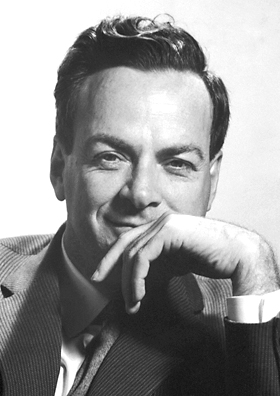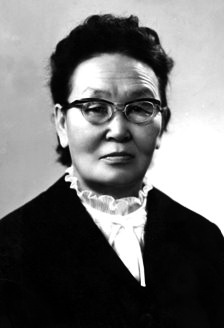
Richard Phillips Feynman was an American theoretical physicist, known for his work in the path integral formulation of quantum mechanics, the theory of quantum electrodynamics, the physics of the superfluidity of supercooled liquid helium, as well as his work in particle physics for which he proposed the parton model. For his contributions to the development of quantum electrodynamics, Feynman received the Nobel Prize in Physics in 1965 jointly with Julian Schwinger and Shin'ichirō Tomonaga.

The Tuvan People's Republic or TPR; known as the Tannu Tuva People's Republic until 1926, was a partially recognized state that existed between 1921 and 1944. It was formally a socialist republic and de facto a Soviet puppet state. The TPR was located in Tuva, covering the same territory, north-west of Mongolia, as was the previous 1914–1921 Tuvan protectorate of the former Russian Empire, and is now the Tuva Republic, an administrative part of Russia.

Kyzyl is the capital city of the republic of Tuva, Russia. The name of the city means "red" or "crimson" in Tuvan. Its population was 120,067 (2021 Census);

Genghis Blues is a 1999 American documentary film directed by Roko Belic. It centers on the journey of blind American singer Paul Pena to the isolated Russian Republic of Tuva to pursue his interest in Tuvan throat singing.

Kongar-ool Borisovich Ondar was a master Soviet and Russian Tuvan throat singer and a member of the Great Khural of Tuva. Ondar was born near the Khemchik River in western Tuva, in the village of Iyme. In the Central Asian tradition of self-fulfilling child naming, Kongar-ool literally translates to "loud boy." In 1983 Ondar was drafted into the army, but was discharged due to a neck injury. After, he served several years in prison in Siberia. In 1992, after his release, Ondar won an international throat-singing contest, which brought invitations to perform in Europe and the United States and began his singing career.

Tuva or Tyva, officially the Republic of Tuva, is a republic of Russia. Tuva lies at the geographical center of Asia, in southern Siberia. The republic borders the Altai Republic, Khakassia, Krasnoyarsk Krai, Irkutsk Oblast, and Buryatia in Russia, and shares an international border with Mongolia to the south. Tuva has a population of 336,651. Its capital is the city of Kyzyl.
Ralph Leighton is an American biographer, film producer, and friend of the late physicist Richard Feynman. He recorded Feynman relating stories of his life. Leighton has released some of the recordings as The Feynman Tapes. These interviews became the basis for the books Surely You're Joking, Mr. Feynman! and What Do You Care What Other People Think?, which were later combined into the hardcover anniversary edition Classic Feynman: All the Adventures of a Curious Character. Leighton is an amateur drummer and founder of the group Friends of Tuva. In 1990 he wrote Tuva or Bust! Richard Feynman's Last Journey.

The Tuvan Autonomous Soviet Socialist Republic, or the Tuvan ASSR, was an autonomous republic of the Russian SFSR. It was created on 10 October 1961 from the Tuvan Autonomous Oblast. Its territory measured 175,000 square kilometers and bordered Mongolia to the south, Buryat ASSR to the east, Gorno-Altai Autonomous Oblast to the west and Khakas Autonomous Oblast to the north.

Khertek Amyrbitovna Anchimaa-Toka was a Tuvan and Soviet politician who in 1940–44 was the Chairwoman of Little Khural of the Tuvan People's Republic, and the first non-royal female head of state. She was the wife of Salchak Toka, who was the republic's supreme leader from 1932 to 1973.

Tuvan throat singing, the main technique of which is known as khoomei, is a style of singing practiced by people in Tuva, Mongolia, and Siberia. It is noted for including overtone singing. In 2009, it was included in the Representative List of the Intangible Cultural Heritage of Humanity of UNESCO. The term hömey / kömey means throat and larynx in different Turkic languages. That could be borrowed from Mongolian khooloi, which means throat as well, driven from Proto-Mongolian word *koɣul-aj.

The Tuvan People's Republic issued postage stamps between 1926 and 1936. They were popular with stamp collectors in the Western world in the mid-twentieth century because of the obscurity and exoticism of Tannu Tuva and the stamps' quirky, colorful designs. The validity of many stamps purportedly issued by Tannu Tuva has been questioned by philatelists.
Project Tuva was a collaborative research project between Bill Gates and Microsoft Research in 2009 demonstrating the potential value of an interactive video player platform for learning.
Sevʹyan Izrailevich Vainshtein was a Russian ethnographer, archaeologist, and historian of Siberian and Central Asian peoples. He was a professor at the Institute of Ethnology and Anthropology of the Russian Academy of Sciences in Moscow.

The territory currently known as Tuva has been occupied by various groups throughout its history. Sources are rare and unclear for most of Tuva's early history. Archeological evidence indicates a Scythian presence possibly as early as the 9th century BC. Tuva was conquered relatively easily by the succession of empires which swept across the region. It was most likely held by various Turkic khanates until 1207. It was then ruled by various Mongol-led regimes until the 18th century, when it submitted to the Manchu-led Qing dynasty. Slow Russian colonization during the 19th century led to progressive annexation of the region to Russia in the 20th century. The region was then controlled by the Russian Empire and the Soviet Union before finally joining the Russian Federation in 1992. Throughout this whole time, the borders of Tuva have seen very little modification.

The Feynman Lectures on Physics is a physics textbook based on some lectures by Richard Feynman, a Nobel laureate who has sometimes been called "The Great Explainer". The lectures were presented before undergraduate students at the California Institute of Technology (Caltech), during 1961–1963. The book's co-authors are Feynman, Robert B. Leighton, and Matthew Sands.

The 1929 Tuvan coup d'état took place in the Tuvan People's Republic. It occurred in January after the Tuvan government under Prime Minister Donduk Kuular attempted to implement nationalist, religious and anti-Soviet policies, including making Tibetan Buddhism the official religion. With support from the Soviet Union, five Tuvan youths successfully overthrew the government, and one of them, Salchak Toka, became supreme ruler as General Secretary of the Central Committee of the Tuvan People's Revolutionary Party. They quickly reversed Donduk's policies and brought the republic closer to the Soviet Union. The Tuvan People's Republic later joined the Soviet Union in 1944.

Uryankhay Krai was the name of what is today Tuva and was a short-lived protectorate of the Russian Empire that was proclaimed on 17 April 1914, created from the Uryankhay Republic which had recently proclaimed its independence from the Qing dynasty of China in the Mongolian Revolution of 1911. After the February Revolution and abdication of Tsar Nicholas II, Uryankhay Krai recognized the new Russian Republic and reaffirmed its status as a Russian protectorate in 1917.

The Tuvan People’s Republic entered World War II on the side of the Allied Powers, shortly after the invasion of the Soviet Union by Nazi Germany, breaking the non-aggression pact between the Soviet Union and Third Reich.

The Tuvan People's Revolutionary Army (TNRA) (Russian: Тувинская народно-революционная армия; Tuvan: Тываның Араттың Революстуг Шерии) was the military wing of the Tuvan People's Revolutionary Party which constituted the armed forces of the Tuvan People's Republic.















